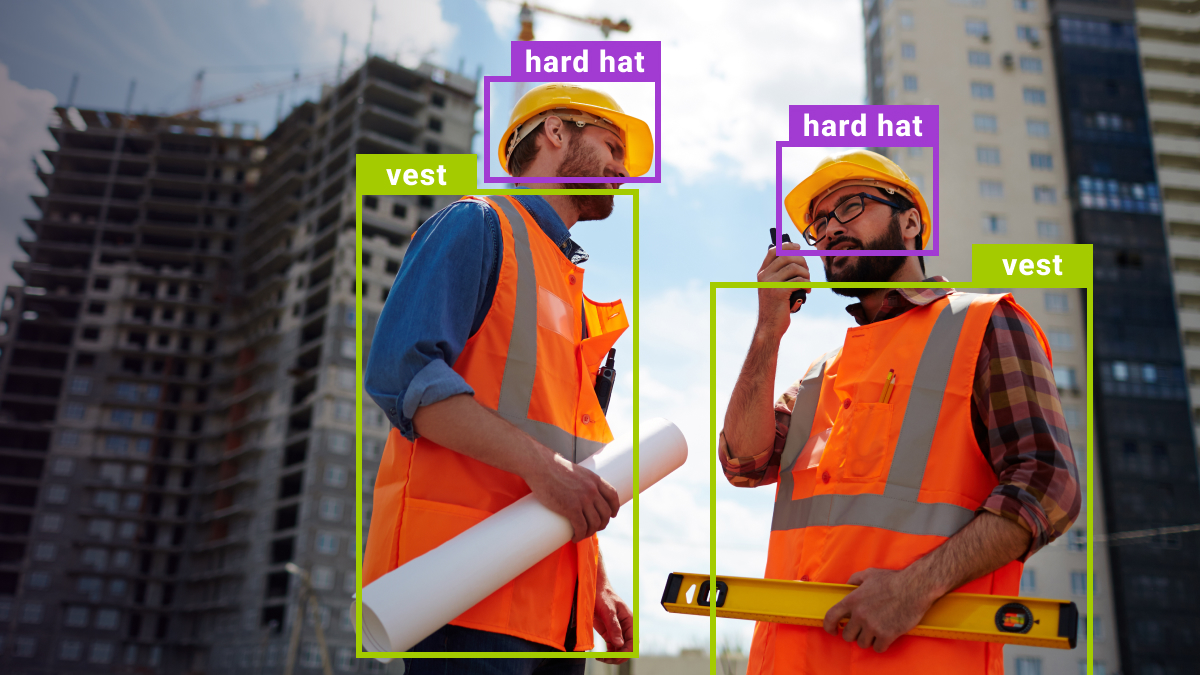Improving Construction Site Safety With Artificial Intelligence
Construction companies are increasingly turning to artificial intelligence to efficiently manage the quality of projects and monitor the sites to ensure the safety of both workers and equipment. Though AI adoption by construction firms is still at an early stage, industry executives expect the technology to reduce waste and conserve resources, track on-site visibility, and increase safety and efficiency. Today we will look at some of the recent developments in AI that are making construction sites safer and how data annotation contributes to this goal.
Preventing Falls From Scaffolding
Scaffolds are used by builders and construction workers to elevate themselves, materials, and equipment. Any significant construction, restoration, or repair project on a building larger than a doghouse likely involves the use of scaffolding. In fact, 65% of construction projects in the United States involve the use of scaffolding by an estimated 2.3 million workers, according to the federal Bureau of Labor Statistics (BLS). With that many people and that much usage, construction accidents and serious injuries are apt to happen.
However, new technology from Pangea I.T. could potentially solve the problem of construction workers’ falls from scaffolding. There are two main reasons why falls occur: workers not tying themselves to the lifeline cable attached to the suspended scaffolding and, second, the loading of equipment and materials beyond the scaffolding’s capacity. The new technology combines sophisticated sensors, AI analytics, and computer vision systems that send automatic, real-time alerts as soon as a dangerous load is detected or when one or more workers have not tied themselves to the lifeline. These alerts help site managers eliminate any potential risk to the workers’ welfare before work even begins.

Ensuring That Necessary Numbers of Workers are Employed
Construction companies often use unorganized labor, with even large firms appointing third-party workers. It is important to track workers, making it even more important to take attendance of how many people are actually on the job site. On-site cameras use facial-recognition software to keep a count of the number of workers. It allows companies to take attendance and ensure that an adequate number of workers are employed. Such remote visibility, remote control, and remote understanding of site performance can help them utilize their time and resources better and grow the business.
Similar computer vision technology is used for automatic number plate recognition (ANPR). Construction sites are busy and dynamic environments, and having control is key for speedy completion and fewer incidents. With ANPR, companies are able to control movement on sites, improve job site security, limit site access, and many other benefits. Basically, the ANPR software works by locating the number plate on a vehicle through cameras and capturing that data using AI. The software will then create a log of all plates read along with the time-stamped image.
What Types of Data Annotation are Required to Create Such Technologies?
The AI technologies we looked at rely on computer vision to perform the needed functions. However, the types of the necessary data annotation will depend on exactly what you need the AI system to detect and recognize. For example, if we take a look at the first technology, Pangea I.T., which prevents falls from scaffolding, the system needs to, first of all, detect the worker and then whether or not they have performed the necessary safety precautions. Data annotators would need to draw 2D bounding boxes around images of construction workers and then use methods such as semantic segmentation for the fine details such as the safety rope not being tied.
If we look at the ANPR technology, such a system requires optical character recognition capabilities. This might require the data annotators to convert images of license plates into machine-readable text. Named entity recognition might also be necessary since the system needs to recognize the state the license plate was issued in.
Trust Mindy Support With All of Your Data Annotation Needs
Mindy Support is a global company for data annotation and business process outsourcing, trusted by several Fortune 500 and GAFAM companies, as well as innovative startups. With nine years of experience under our belt and offices and representatives in Cyprus, Poland, Romania, The Netherlands, India, and Ukraine, Mindy Support’s team now stands strong with 2000+ professionals helping companies with their most advanced data annotation challenges.




